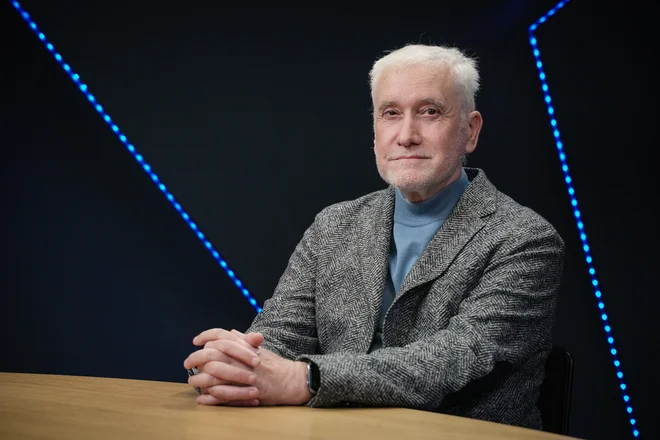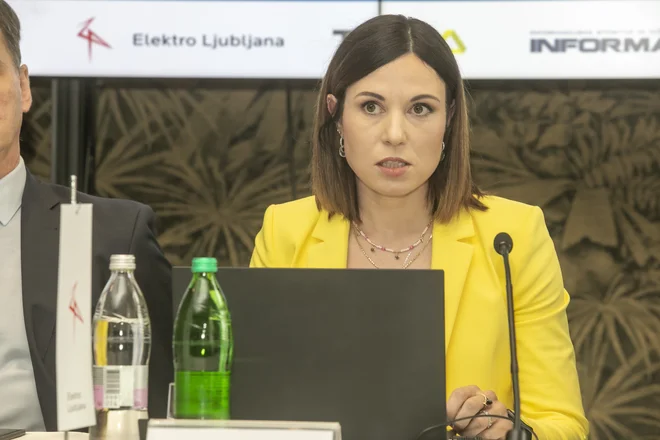Chronic stress destroys our brain

How do we differ from all other living things? What is it that allows a person to go to the moon, to observe Earth from there and wonder about the meaning of existence? The answer lies in our brains. But as a specialist in neurology, prof. dr. Zvezdan Pirtošekthis organ stands not only in size, but especially for its complexity and connection. Head of the Department of Neurology at the Faculty of Medicine in Ljubljana and the president of the Trepetlika Society was this guest of the podcast this year In the outpatient clinic with dr. Eagle.
The conversation begins with philosophical-historical reflection on the role of brain over time. For centuries, different cultures of mind, soul and consciousness have placed in the heart, abdomen or kidneys, and did not attach much importance to the brain. The old Egyptians even removed them as irrelevant when mummified. Only the ancient Greeks, especially Hippocrates, understood the brain as the seat of thought and mentality. In the Middle Ages, the church dualistic view rejected the border between physical and spiritual, and diseases were often interpreted as a result of sin.
The first serious descriptions of brain injuries occur in mesopotamia and Egypt, with observations of the connection between brain damage and physical functions. A real scientific breakthrough occurs only in the 20th century, especially with the description of Alzheimer’s disease in 1905, when Alois Alzheimer presents it for the first time as a brain disease, not a soul, said Zvezdan Pirtošek, also president of the Treplika Society, who combines patients with Parkinson’s disease and experts who strive for better quality of life for patients.
One of the greatest scientific and philosophical wonders
Two events further accelerated the understanding of the brain: wars that caused mass damage to the brain, and pandemic of encephalitis, Spanish flu. At the end of the century, neuroscience – an interdisciplinary science that connects medicine, philosophy and computer science, was born. Today, in addition to space and genetics, the brain seems to be one of the greatest scientific and philosophical wonders of our time.
Dr. Zvezdan Pirtošek was, for his penetrating, professional and philanthropic work in the field of dementia treatment, in 2018 he received the state award of the Red merit. Photo: Marko Feist
A common idea is that the human brain is significantly different from the brain of other animal species, but this is not entirely true. “If we look at the brain and take a small piece of nervous system, we cannot separate the nerve cells of the worm from the nerve cells of the human. Only when we look at the whole do we see the difference, « explains Pirtošek. Interestingly, the Neanderthal’s brain was larger than ours – they were heavy up to 2000 grams, while today’s man carries an average of 1300 to 1400 grams a heavy organ. But size is not essential: « The size of the brain is not the answer to the question of what makes us so powerful that we are the only beings who can go to the moon and think about the essence of the universe. »
Even in terms of body and brain size, man is not an absolute record holder. “We do not stand out in size, weight, or in wrinkling – they are animals with a more pleated brain. We stand out by the fact that we have about 87 billion nerve cells in our brain. And each has up to 10,000 connections with others. The number of permutations is stunning, « says Pirtošek.
The key to human peculiarities is in the rapid development of a particular part of the brain: “The front of the brain develops very quickly – this is part that abstractly thinks, concludes, creates ethical self. This part has evolved faster than our ancestors, even faster than in Neanderthal, « the neurologist explained.
The brain is decreasing
Despite this advanced function, the brain – paradoxically – is reduced in the last tens of thousands of years. « We have lost our brain tissue tennis ball, » says Pirtošek. Pessimists see this as a sign of degeneration of the species, and optimists as a transition to greater efficiency: « Perhaps an example is a government that has fewer ministries but acts more effectively. »
The brain is not static. Behavior and life circumstances directly affect their structure. Pirtošek describes an example from textbooks: “A picture of two four -year -old boys, one is with a loving family, good eating and encouraging environment, the other abused and neglected, shows huge differences in brain structure. The layman would also notice that the brain is significantly smaller and less developed. « Or the case of Albert Einstein: » After his death, his brain was cut and sent to laboratories. They found that he had very developed parts for the spatial show – logical, since he was a physicist. But the parts associated with the movement of the left hand were also very developed. He was a passionate violinist. This means that lifestyle is physically forming our brains. «
Every learning, every challenge, every new skill is also a contribution to the vitality of the brain – in all stages of life.
Does the digital revolution change the brain of young people? “The brain structure does not change significantly between generations, and functional architecture. The processes of attention, memory and response are different today, « the professor replied. This means that the brains of today’s teenagers who grow up in the world of fast information are otherwise processed by data than generations that grew up with books and personal contacts. But the right structural change only occurs with long -lasting, specific activities – such as playing a musical instrument.

The processes of attention, memory and response are different today. Photo: AFP
But what about when the brain suffers an injury, such as a stroke or a stroke? Good news: the brain has the ability to recover but limited. « Regeneration is small, but there is neurogenesis, that is, the formation of new cells, and neuroplasticity, the ability of the brain to establish new connections, » explained Pirtošek. Two mechanisms are especially important. The first is the neurogenesis that occurs in the hippocampus (center of memory), amygdali (emotions) and the anterior lobe (personality). The other is neuroplasticity: “Any new information can trigger the growth of a new outgrowth of a neuron that connects with another. This allows us to learn and recover from injuries. «
One is natural aging, the other pathological processes
Over the years, the brain is aging, but it must be distinguished between natural aging and disease degeneration. “We did not separate it once, but now we are clearly distinguishing. Muscles, skin and heart are also aging – the same applies to the brain. But in diseases such as Alzheimer, these are pathological processes, « explained Pirtošek.
Science is still looking for answers to prevent disease degeneration, but the understanding of the regeneration and plasticity of the brain opens up promising pathways. Every learning, every challenge, every new skill is also a contribution to the vitality of the brain – in all stages of life.
« Stress can be divided by a neurologist into two types, » Pirtošek said. “Acute stress that takes several hours, for example, when we write the exam, it can be useful. At that time, cortisol, adrenaline and other hormones help to mobilize our forces. ”This stress strengthens us, makes us fighters.
A completely different story is chronic stress. These are long -lasting, months or years of worry, such as parents with Alzheimer’s dementia, a dying partner or a child lost in the world of addiction. « This stress means a constant flow of cortisol and adrenaline, and today we know exactly that cortisol physically destroys brain cells, » warns Pirtošek. « Especially in the hippocampus where memories are stored. »
The brain is not an organ we have once and for all. They are alive, change – and we can protect them to some extent.
Cortisol also works on the amygdala, the fears center, and the frontal lobe, which controls our judgment, ethics and moral decisions. “In chronic stress, these functions break up: memory is walking, behaving like scared animals full of restlessness and fear. Therefore, the fight against chronic stress must be one of the key tasks in the middle and late life span. It destroys our brain. «
Dementia: incurable but manageable
Dementia is Pirtošk’s narrower professional specialty. In his conversation, he explains that it is a collapse of higher mental functions: memory, orientation, writing, calculations, abstract thinking. “It is important to remember that 10 to 15 percent of dementia are reversible. It can be vitamin B12 deficiency, thyroid disease, tumors or hydrocephalus. If we find out the right cause, we can help the patient a lot. «
Unfortunately, most dementia, about 85 percent, are neurodegenerative, among which Alzheimer’s disease is dominated. “If you are given by Alzheimer’s dementia, you probably won’t be able to prevent it. The only way would be to cease to age, « he says with bitter humor. However, we have medicines that slightly alleviate the course of the disease. “In about a third of patients, the condition improves, and in the second third the disease is stabilized. But this stability is often disturbed when the medicines are discontinued too quickly. Unfortunately, a third of patients do not answer treatment. «
Asked what everyone can do for the health of their brain, Pirtošek answers very concrete: « Scientific evidence shows that by changing lifestyle, dementia may reduce the incidence of dementia by 40 percent. »
• Movement: at least 30 minutes walk per day
• Learning: Foreign Language Delets Dementia for Nearly Five Years
• Avoiding chronic stress: Continuous cortisol destroys cells, especially
In the hippocampus
• quality sleep: seven to nine hours a day
• Social involvement: loneliness accelerates the puff
• Nutrition: Mediterranean diet has a protective effect







